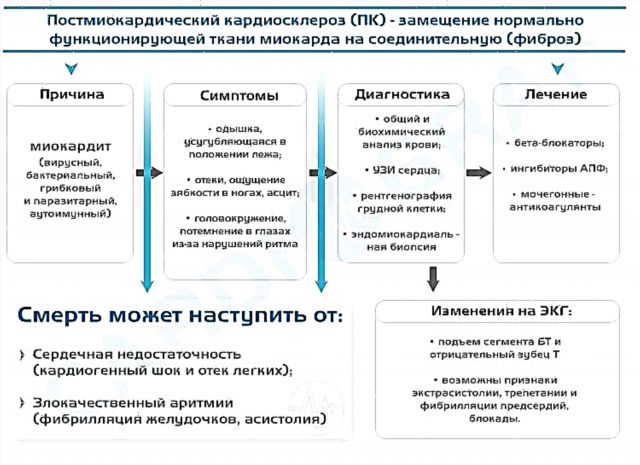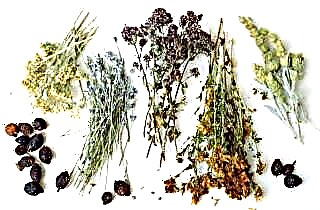Sudden coronary death (SCD) is caused by cardiac arrest resulting from a pathology of cardiogenic or non-cardiogenic origin. The main reason is the violation of the contractile function of the heart and electromechanical dissociation. Cardiac activity stops suddenly or within a few hours. More than 80% of deaths are diagnosed in people with ischemic disease, atherosclerosis and arrhythmia in history. In case of cardiac arrest, the only method of salvation from sudden death is resuscitation measures.
Causes of sudden acute coronary death
Sudden coronary death develops when the contractions of the heart stop as a result of its defeat of various etiology and genesis. At the heart of the pathogenesis, the pumping function and blood flow are inhibited, ischemia, hypoxia or arrhythmia occurs. These factors cause electromechanical dissociation - a condition in which there is no mechanical contraction of the atria and ventricles of the heart, but electrical activity is preserved. This leads to clinical death, in which it is possible to return a person to life only with cardiopulmonary resuscitation.
Many factors can provoke a lethal outcome. The main causes of acute coronary death are cardiac according to the latest classification. Below is a list of them:
- chronic ischemic disease on the background of atherosclerosis and coronary artery disease;
- severe angina pectoris;
- a state of dysfunction of the left ventricle of the heart, damage to the coronary vessels;
- a previous heart attack;
- repeated heart attack, especially in the area of the lower wall;
- a sudden attack of arrhythmia;
- a rapid increase in ventricular fibrillation;
- tachycardia of the ventricles with an absent pulse;
- a sudden pronounced attack of spasm of the blood vessels of the heart;
- poisoning with heart drugs or poisons;
- asystole with lack of electrical activity;
- secondary electromechanical dissociation as a result of thromboembolism or pericardial tamponade, identified pathologically;
- critical hypovolemia, hypocalcemia, or hypercalcemia;
- progressive toxemia, metabolic acidosis.
Who is exposed: risk factors
The processes of disturbance of excitability, contractility of the myocardium of the heart and toxic-metabolic disorders lead to sudden cardiac death. The risk of a dangerous pathology is increased by certain factors, such as:
- Systematic consumption of alcohol in large doses and smoking.
- Progressive cardiac insufficiency and refusal to treat it.
- Overweight, high cholesterol and changes in blood lipid profile.
- The presence of atherosclerosis, arrhythmias, a history of ischemic heart disease, extensive transmural infarction less than 12 months. back.
- Metabolic syndrome, endocrine pathology, drug addiction.
Most often, ICD develops in coronary artery disease in the age group 35 - 75 years, mainly in men. More susceptible to patients with large-focal myocardial infarction during the last 10 months. It should be remembered that cardiac arrest is not always fatal and potentially reversible, and therefore the only rescue method is emergency treatment for sudden coronary death.
Emergency prevention: what to do?
Considering the main reasons for the development of sudden cardiogenic death, prevention consists of measures aimed at early diagnosis and proper treatment of diseases of the heart, blood vessels, and concomitant pathological conditions. Also, special attention should be paid to preventing the occurrence of such pathologies:
- Atherosclerosis and dyslipidemia, observing proper nutrition, reducing the amount of fatty foods, alcohol intake.
- Obesity, metabolic syndrome in the presence of diabetes, reducing the consumption of sweet, simple carbohydrates, saturated fat.
- Heart disease, reducing salt intake, smoking cessation.
Additionally recommended:
- Timely treatment of malignant arrhythmia, progressive angina pectoris.
- In the presence of cardiac pathology, regular examination with ECG, EchoCG, Holter monitoring.
- Hospitalization in the clinic with a primary deterioration of the condition.
Algorithm for helping the victim
With VKS, the state develops extremely rapidly. Resuscitation is required if a person has no consciousness, breathing and pulse, dilated pupils do not react to light. Determination of signs of life and an ambulance call must be made within 10-15 seconds, otherwise it will not be possible to save from cardiac arrest. The order of execution according to the standard scheme of cardiopulmonary resuscitation according to the CAB algorithm:
- Restoration of blood circulation by the method of chest compressions.
- Providing access to the respiratory tract and their patency.
- Resuming oxygen access by artificial respiration.
Early initiation and adherence increases the risk of rescue from cardiac arrest. The algorithms of actions are presented in more detail in the article "Rules for performing cardiopulmonary resuscitation".
Medical resuscitation includes registration of cardiac activity on a cardiogram, defibrillation if indicated, intubation and artificial ventilation of the lungs with oxygen supply, catheterization, cardiac massage and coronary angiography under the control of the patient's condition.
Conclusions
There are many factors that can trigger sudden coronary death. In 85% of cases, cardiac arrest is recorded in patients with a history of cardiac pathology and the presence of a hereditary predisposition. Given the high risk of death from VKS, special attention should be paid to the rules for the prevention and prevention of a dangerous condition, to observe the regularity of examinations by a general practitioner and a cardiologist.



